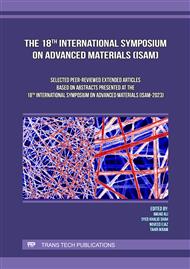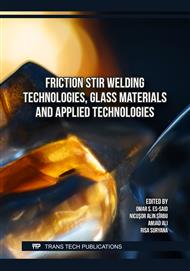p.25
p.37
p.45
p.53
p.67
p.75
p.85
p.93
p.105
Thermal Imaging: An Alternative Approach for Crack Identification in Solar Panels
Abstract:
This research paper presents a comprehensive study on the identification of cracks in solar panels using a combination of electroluminescence (EL) and thermal imaging techniques. The EL imaging was utilized to capture the electroluminescent response of the panels, highlighting any irregularities in the cell structure caused by cracks. While thermal imaging was used to identify temperature variations indicative of crack locations due to localized heat dissipation. The results of the study demonstrate the efficacy of each imaging technique in crack detection. EL imaging exhibited high sensitivity to cracks, providing detailed information about the location and extent of the damage. Thermal imaging, on the other hand, revealed temperature differentials in cracked areas. Furthermore, thermal imaging can expediently assess health of solar panels insofar as both methods were successful in identifying major defects in solar panels. In addition, the research paper discusses the advantages and limitations of each imaging technique, providing insights into their applicability in real-world solar panel inspection scenarios. The thermal imaging showed that a temperature difference of ten degree Celsius between average and peak temperature on solar panels showed major cracks or faults in the panel.
Info:
Periodical:
Pages:
85-91
Citation:
Online since:
November 2024
Price:
Сopyright:
© 2024 Trans Tech Publications Ltd. All Rights Reserved
Share:
Citation:



